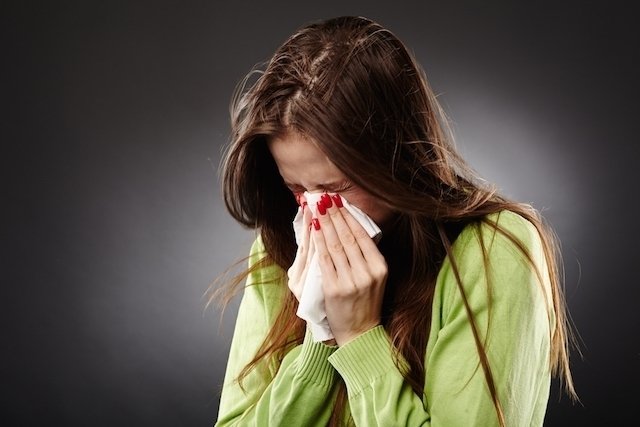The main differences between a cold and a flu is the intensity of symptoms, as well as where the respiratory tract is affected.
Generally speaking, flu symptoms are more intense and last longer than cold symptoms. With a cold, the upper respiratory tract (above the lungs) is more affected, while with the flu, the entire lung can be affected.
In addition, flus occur mostly in the winter time and are easily transmissible. A person infected with the flu in a closed room with other people can easily contaminate those around him/her.

Difference between a cold or flu
The following table summarizes the main differences between a cold and flu:
Another condition called a "flu-like syndrome" can also present similarly to the flu. It can be caused by a flu virus or by another virus os bacteria. Common symptoms include fever, coughing, sore throat, muscular pain and headache.
Although the flu-like syndrome can be treated at home with rest and fluids, there are some cases in which symptoms can worsen and fever can become very elevated and persistent. Some people may even experience difficulty breathing. In these cases, you should proceed to a hospital for assessment and treatment with antibiotics, if necessary.
How to treat the flu
Treatment for the flu can be initiated with medication as prescribed by a doctor. Acetaminophen can help to lower a fever, while anti-histamines can relieve other symptoms, like a runny nose. Depending on the duration and intensity of symptoms, antivirals, like oseltamivir (Tamiflu), may also be prescribed. Check out other flu medicine that is commonly recommended for treating influenza.
Rest and plenty of fluids (water, tea, broths and fresh juices) are also recommended.
If the infection reaches the lungs and is left untreated, there is a probability for complications like developing pneumonia. Read more about the symptoms of pneumonia, as well as how it is diagnosed and treated.
Read more about how to cure the flu fast.
How to treat a cold
To treat a cold, you may find relief in taking over-the-counter decongestants or anti-histamines.
Taking vitamin C can help to strengthen the immune system and get rid of symptoms faster. You can also consume vitamin C naturally by eating oranges, pineapple, cherries, or strawberries.
Home remedies for a cold or flu
Some great home remedies for the cold or flu are lemon tea with honey and orange juice with propolis extract. These remedies are rich in vitamin C and antioxidants that help to boost recovery.
Other important measures to keep in mind are:
- Bundling up with plenty of clothes
- Keeping your feet warm
- Washing your hands after coughing or sneezing
- Covering your mouth with the crook of your elbow when sneezing or coughing
- Avoiding closed environments
- Avoid eating cold food
- Keeping your nose clear
Learn more about other home remedies for the cold or flu that you can use to complement your medically prescribed treatment.
